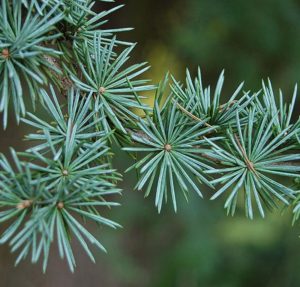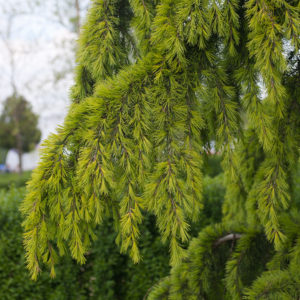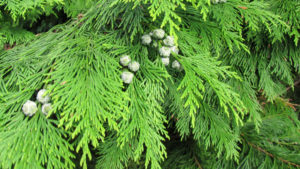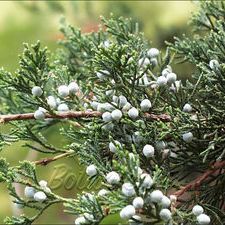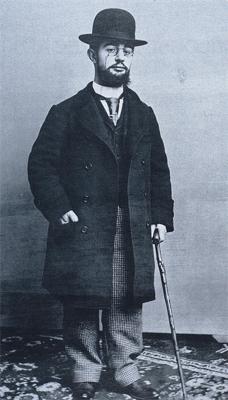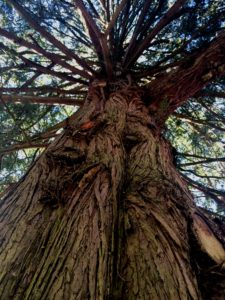The majority of essential oil-based literature published prior to 2013 include a profile on Atlas cedarwood (Cedrus atlantica G. Manetti) essential oil. The conservation status of Atlas cedar (C. atlantica) is never noted in these profiles, because there was no conservation status for this species until 1998, when it was then categorized as a species of Least Concern, meaning the risk of its extinction was low (IUCN, 2017). Unfortunately, in 2013, just 15 years later, new data revealed that it is endangered (Thomas, 2013; IUCN, 2017). A species is deemed endangered when natural population numbers decrease ≥50% over 10 years or 3 generations, assessments of wild and mature adults total less than 2500 and the numbers are declining, and there is a 20% probability of its extinction within 20 years or 5 generations (IUCN, 2017).
To the best of my knowledge, much of the essential oil-based literature published after 2014 still includes a profile on Atlas cedarwood (C. atlantica). However, it is rarely acknowledged that Atlas cedar (C. atlantica) is now facing the threat of extinction. If it is mentioned, suggestions of essential oils which could be used in lieu of Atlas cedarwood (C. atlantica), that aren’t sourced from a threatened plant(s) and that have similar therapeutic properties and/or chemical compositions, are not made.
Consequently, to explore alternatives to Atlas cedarwood (C. atlantica) essential oil which meet these criteria, this report highlights differences and similarities among the conservation statuses, chemical profiles, physical-therapeutic properties, and contraindications/hazards of eight cedars and their wood/leaf essential oils. The eight cedars are 1) Atlas cedar (C. atlantica), 2) Himalayan cedar (C. deodara Roxb. Ex D. Don), 3) Port Orford cedar (Chamaecyparis lawsoniana (Andr. Murray) Parl.), 4) Chinese cedar (C. funebris (Endl.) Franco), 5) Texas cedar (Juniperus ashei [syn. mexicana] Buchholz), 6) Virginian cedar (J. virginiana), 7) Western red cedar (Thuja plicata Donn), and 8) Eastern white cedar (T. occidentalis L.).
First off, when it comes to cedar, Latin names are key to quickly and correctly discerning among them. This is because unlike a Latin name, there are multiple common names per cedar which are easy to confuse with common names of different cedar species. For example, Virginian cedar is also known as red cedar and eastern red cedar, Thuja is also known as eastern white cedar, and Pacific thuja is also known as western red cedar, yet their Latin names are simply J. virginiana, T. occidentalis, and T. plicata, respectively (Table 1).

Table 1. The Latin name and common names of eight cedar trees. Common names in bold text are the ones used throughout this report. © Dr. Kelly Ablard
Conservation statuses (IUCN, 2017)
Atlas cedar (C. atlantica) is distributed in Morocco and Algeria, and is categorized as ‘Endangered’ as a result of increased exploitation over the last ~60 years, in part for its essential oil (Table 2). Unfortunately, drought, overgrazing, fire, pests, and diseases have exacerbated this serious problem (as cited in IUCN, 2017). Essential oils sourced from threatened species should be avoided unless you are certain they are ethically sourced and legally traded. Read more about this here.
Port Orford cedar (C. lawsoniana) is distributed along the west coast of California and Oregon, and is categorized as ‘Near Threatened’ (Table 2). Near Threatened species are close to being classified as a threatened species if not for ongoing conservation programs. Port Orford cedarwood has fluctuated in demand throughout the USA and Japan for nearly a century. It is used for constructing many things such as houses, furniture, boats, airplanes, silos, and toys. Japan prefers the wood for their homes and temples as a substitute to their native and also near-threatened hinoki (C. obtusa) tree (cited in IUCN, 2017). Essential oils sourced from Near Threatened species should be avoided if possible.
Five of these species are classified as ‘Least Concern’ (Table 2). They are 1) Himalayan cedar (C. deodara), distributed in Afghanistan, Pakistan, China, Kashmir, and Nepal; 2) Texas cedar (J. ashei), distributed in central USA and Mexico; 3) Virginian cedar (J. virginiana), distributed in central and eastern USA; 4) Western red cedar (T. plicata), distributed in western USA and Canada; and 5) Eastern white cedar (T. occidentalis) distributed in eastern USA and Canada. Species that are categorized by the IUCN as Least Concern have a very low risk of extinction, but should still be sustainably managed. Speaking from a conservation standpoint, I recommend using oils and extracts from these plants whenever possible.
Chinese cedar (C. funebris), distributed in southwestern and central China, is categorized as ‘Not Evaluated’ (Table 2). Not Evaluated means that these species have not yet been evaluated against the IUCN criteria. Caution should be taken when purchasing essential oils sourced from this species until an assessment on population numbers has been accepted by the IUCN.
And finally, although adulteration of essential oils from threatened plants is common, most cedarwood oils are adulterated regardless of their conservation status. This is because of their similar chemical profiles and low cost to acquire. Adulteration is rarely done with synthetic oils, but rather with a blend of multiple cedarwood/leaf oils (Lis-Balchin, 2006). For example, Virginian cedarwood (J. virginiana) and Texas cedarwood (J. ashei) essential oils may be adulterated with the addition of Chinese cedarwood (C. funebris) oil (Tisserand & Young, 2014).

Table 2. Cedar common name, family, genus, and conservation status (i.e. Endangered, Near Threatened, Least Concern, and Not Evaluated) of eight cedar trees. An (x) in red font indicates a recommendation to avoid purchasing its essential oil. © Dr. Kelly Ablard
Family Pinaceae
Two of these eight species, belong to the family Pinaceae: Atlas cedar (C. atlantica) (Image 1), and Himalayan cedar (C. deodara) (Image 2). Interestingly, the genus name Cedrus is derived from the word ‘kedron’, which translates to ‘power’ in Arabic (Mojay, 1997). The genus name, Mojay explains, is in alignment with the fortifying and strengthening properties of these essential oils.
Atlas cedar (Cedrus atlantica G. Manetti)
Atlas cedarwood (C. atlantica) essential oil is steam or hydro distilled from wood chips, preferably from the heartwood. Key chemical constituents include β-Himachalene, α-Himachalene, (E)-α-Atlantone, and γ-Himachalene (Aberchane & Fechtal 2004) (Table 3); the himachalenes and their derivatives are heavily sought after by the pharmaceutical and perfume industries. Further, C. atlantica essential oil has insecticide properties, and many therapeutic properties such as: antiseptic, antiseborrheic, astringent, antiacne, diuretic, lipolytic, pectoral, restorative, tonic, decongestant, depurative, expectorant, sedative, antibacterial, antiinflammatory, antifungal, and anticatarrhal (Table 4) (Mojay, 1997; von Marksfeld-Fuhrherr, 2004; Gray, 2006; Lis-Balchin 2006; Farrer-Halls 2009; Guba, 2012; Price et al., 2012; Martins et al., 2015; Worwood, 2016; Orchard & van Vuuren 2017). Contraindications and hazards: none (Tisserand & Young, 2014).
Himalayan cedar (Cedrus deodara Roxb. Ex D. Don)
Himalayan cedarwood (C. deodara) essential oil is steam distilled from the wood. Similar to C. atlantica essential oil, its key chemical constituents are β-Himachalene, α-Himachalene, and γ-Himachalene (Gupta et al. (2011); as cited in Tisserand & Young, 2014, p. 238) (Table 3). However, amounts of the same key constituents vary between reports by Gupta et al., and Lawrence; this variation could be because of climate and soil conditions, and/or the distillation method, which are known to affect the chemical composition of its close relative C. atlantica (Aberchane & Fechtal 2004). Himachalenes and atlantones are the major constituents likely linked to its insecticide properties which are active against the termite (Odontotermes obesus) (Chaudhar et al., 2011; Gupta et al., 2011). Therefore one could posit these constituents also play a role in the insecticide properties of C. atlantica essential oil. Also similar to C. atlantica essential oil, C. deodara has grounding properties (Mojay 1997; Price et al., 2012). Contraindications and hazards: none and mildly toxic, respectively (Tisserand & Young, 2014).
Family Cupressaceae
Six of these eight species belong to the family Cupressaceae including Port Orford cedar (Chamaecyparis lawsoniana (Andr. Murray) Parl.) (Image 3), Chinese cedar (C. funebris (Endl.) Franco), Texas cedar (Juniperus ashei Buchholz), and Virginian cedar (J. virginiana) (Image 4). The genus Juniperus, has approximately 68 species worldwide, to which many are recognized for their medicinal properties, but only two species J. ashei and J. virginiana are the primary sources of cedarwood essential oil for North America (Adams et al., 1988; Tumen et al., 2013). In addition to therapeutic value, their essential oils have strong repellent and larvicidal properties known to affect many mosquito species (Giatropoulos et al., 2013).
Port Orford cedar (Chamaecyparis lawsoniana (Andr. Murray) Parl.)
Port Orford cedarwood (C. lawsoniana) essential oil is steam distilled from the wood. Key chemical constituents are α-Terpineol, δ-Cadinene, α-pinene, Camphor, and α-Fenchol (as cited in Tisserand & Young, 2014, p. 239) (Table 3). It is active against the mosquito Aedes aegypti (L.), and against the Asian tiger mosquito (A. albopictus), which has been coined one of the most invasive mosquito species in the world because it is a vector of 22 arboviruses including Dengue virus (Dolan et al., 2007; Enserink, 2008; Giatropoulos et al., 2012). Interestingly, essential oil extracts from the cones inhibit the growth of the fungi Aspergillus niger and Trichoderma spp (Sivrikaya et al., 2014). Contraindications and hazards: none (Tisserand & Young, 2014).
Chinese cedar (Chamaecyparis funebris (Endl.) Franco)
Chinese cedarwood (C. funebris) essential oil is steam distilled from the wood. Key chemical constituents are Iso-α-cedrene, Thujopsene, Cedrenol, Cuparene, and Longifolene (as cited in Tisserand and Young, 2014, p. 238) (Table 3). Contradictory to Adam’s findings, (1991) Chinese cedarwood (C. funebris) oil is not almost identical in composition to the essential oils of Virginia cedarwood (J. virginiana) and Texas cedarwood (J. ashei) (Table 3). Contraindications and hazards: none (Tisserand & Young, 2014).
Texas cedar (Juniperus ashei Buchholz)
Texas cedarwood (J. ashei) essential oil is steam distilled from the wood. Key chemical constituents are Thujopsene, α-Cedrene, Cedrol, and β-cedrene (as cited in Tisserand & Young, 2014, p. 239) (Table 3). Texas cedarwood (J. ashei) oil is frequently used in perfumery and has many therapeutic properties. Its antibacterial properties inhibit Gram-positive and Gram-negative strains. Additional properties include antifungal, astringent, emmenagogue, and expectorant (von Marksfeld-Fuhrherr, 2004; Lis-Balchin, 2006; Wanner et al., 2010) (Table 4).
Virginian cedar (Juniperus virginiana)
Virginian cedarwood (J. virginiana) essential oil is steam distilled from the wood. Key chemical constituents are the same as those found in Texas cedarwood (J. ashei) essential oil which are Thujopsene, α-Cedrene, Cedrol, and β-cedrene (as cited in Tisserand & Young, 2014, p. 240) (Table 3). Although Virginian cedarwood (J. virginiana) and Texas cedarwood (J. ashei) oil have many of the same therapeutic properties, literature shows that Virginian cedarwood (J. virginiana) oil shares more therapeutic properties with Atlas cedarwood (C. atlantica) than with Texan cedarwood (J. ashei) essential oil. Said properties are antiseptic, antiseborrheic, astringent, decongestant, antiacne, diuretic, lipolytic, pectoral, tonic, depurative, expectorant, sedative, antibacterial, and anticatarrhal (Table 4) (Mojay, 1997; Bowles, 2003; von Marksfeld-Fuhrherr, 2004; Gray, 2006; Lis-Balchin 2006; Farrer-Halls 2009; Guba, 2012; Price et al., 2012; Martins et al., 2015; Worwood, 2016; Orchard & van Vuuren 2017). Further, compared to Virginian cedarwood (J. virginiana), Texas cedarwood (J. ashei), Himalayan cedarwood (C. deodara), and Atlas cedarwood (C. atlantica) essential oils also have insecticide properties (Gawde, 2009) (Table 4). Contraindications and hazards: none (Tisserand & Young, 2014).
None of the cedars should be confused with the remaining two species in this family – Western cedar (Thuja plicata) and Eastern white cedar (T. occidentalis). Although the essential oils from these cedars are incredibly therapeutic and have multiple applications, they are used with caution in aromatherapy. This is because if they aren’t used properly, they may have a neurotoxic effect which is caused by the chemical constituent thujone (Lis-Balchin, 2006; Tisserand & Young, 2014). Please refer to (Tisserand & Young, 2014) for dermal use levels and additional safety advice when using these therapeutic oils.
Thujone is a common name for two naturally occurring monoterpene diastereomeric ketones (-)-α-thujone and (+)-β-thujone. Although T. plicata and T. occidentalis essential oils are rarely used by certified aromatherapy practitioners, (Price et al., 2012), they are frequently utilized and studied by other professionals including medical doctors, nurses, pharmacists, naturopaths, herbalists, chemists, and biologists. Further, they are included in this report to reiterate the importance of relying on Latin names for cedarwood/leaf identification, as some of their common names can be misleading and confusing. And it never hurts to stress the potential side-effects of thujone, even though they are well documented, in both medical and historical contexts. For example, thujone is the chemical in the spirit absinthe, notable for its toxic, and potential psychoactive and hallucinogenic effects. Absinthe, also known as the Green Fairy (Image 5) was the popular drink of choice among many of the artists and writers of the early 20th century. Pablo Picasso, Vincent van Gogh, Henri de Toulouse-Lautrec (Image 6), Edgar Allen Poe, and Marcel Proust were some of the Green Fairy’s addicted admirers, and unfortunately are believed to have suffered greatly as a result.
- Image 5. The Absinthe Drinker by Viktor Oliva
- Image 6. Painter, Henri de Toulouse-Lautrec was known to fill his walking canes with absinthe.
Western red cedar (Thuja plicata)
Western red cedarleaf (T. plicata) (Image 7) essential oil is steam distilled from its needles. Key chemical constituents are α-Thujone, β-Thujone, Sabinene, and Terpinen-4-ol (as cited in Tisserand and Young, 2014, p. 468) (Table 3). The essential oil is active against Gram-(-)-bacterium Proteus vulgaris and Gram-(-)-bacterium Pseudomonas aeruginosa (Jirovetz et al., 2006). Contraindications (all routes): pregnancy, breastfeeding, and should not be taken orally. Hazards: “Expected to be neurotoxic based on thujone content” (Tisserand & Young, 2014). Click here to see a painting by Robi Smith of T. plicata which was inspired by our collaboration.
Eastern white cedar (Thuja occidentalis)
Eastern white cedarleaf/wood (T. occidentalis) essential oil is steam distilled from its needles and branches. Key chemical constituents of the leaf (needle) oil are Fenchone, α-Thujone, β-Thujone, and Sabinene (as cited in Tisserand & Young, 2014, p. 448) (Table 3). Like T. plicata, T. occidentalis has antibacterial properties; it is active against Gram-(+)-bacterium Staphyllococcus aureus and bacterium Enterococcus faecalis. It also strongly inhibits Agrobacterium tumefaciens and Erwinia carotovora var. carotovora, and is mildly active against the fungus Fusarium solani (Badawy & Abdelgaleil, 2014). Extracts are reported to increase circulation, stimulate hormone, enzyme, and gastric secretions, and to affect parasites (Cummings et al., 1991). There is also evidence that it can be used for the treatment of polycystic ovary syndrome (POS) (Akkol et al., 2015). Contraindications (all routes): pregnancy, breastfeeding, and should not be taken orally. Hazards: Neurotoxicity

Table 3. Percentages of key chemical constituents of each cedarwood/leaf essential oil. Although all chemical constituents play an important role in the activity of the oil, only those ≥ 2% were included, with exceptions made to highlight further similarities between chemical profiles. The essential oil source is denoted within ( ) under the common name of each cedar. Constituents highlighted in green are cedars in family Pinaceae, and those in orange are in family Cupressaceae.
1Gupta et al., 2011. © Dr. Kelly Ablard

Table 4. Most common therapeutic properties for Atlas cedarwood, Virginian cedarwood and Texas cedarwood essential oils. ‘X’ indicates properties are present. Red font indicates an endangered species. © Dr. Kelly Ablard
Exploring alternatives
Although the essential oil of Himalayan cedar (C. deodara) is chemically more similar to Atlas cedar (C. atlantica) than to Virginian cedar (J. virginiana) or to Texas cedar (J. ashei), Virginian cedarwood (J. virginiana) essential oil is reported to have numerous, and Texas cedarwood oil to a lesser amount, therapeutic properties that mirror those of Atlas cedarwood (C. atlantica) essential oil. Further, therapeutic uses of Virginian cedarwood (J. virginiana) and Atlas cedarwood (C. atlantica) essential oils are uniquely similar. Consequently, Virginian cedarwood (J. virginiana) essential oil would be a candidate alternative to Atlas cedarwood (C. atlantica) essential oil. Texas cedarwood (J. ashei) essential oil might also be worth further exploring given its similar chemical composition to Virginian cedarwood (J. virginiana) essential oil.
Using Virginian cedarwood (J. virginiana) essential oil in lieu of Atlas cedarwood (C. atlantica) oil would likely support healing in a similar way, positively impact the preservation and protection of Atlas cedar (C. atlantica), and help to control the Virginian cedar (J. virginiana) population numbers. According to Tumen et al. (2013) Virginian cedar (J. virginiana) [and Texas (J. ashei)] cedar are so abundant, they are considered pest species, which is one reason the IUCN has categorized them as ‘Least Concern’. An additional benefit is that also similar to Atlas Cedarwood (C. atlantica) essential oil, both Virginian cedarwood (J. virginiana) and Texan cedarwood (J. ashei) essential oils have no contraindications or hazards.
And from a chemical, rather than a therapeutic standpoint, Himalayan cedarwood (C. deodara) essential oil could be a promising alternative to Atlas cedarwood (C. atlantica) essential oil. These essential oils are significantly and similarly unique in their chemical composition compared to cedars in the family Cupressaceae. This is predominantly because of the himachalenes and atlantones (i.e. β-Himachalene, α-Himachalene, γ-Himachalene, and (E)-α-Atlantone), which likely are linked to insecticide properties. However, more research is needed on the therapeutic and non-therapeutic properties of Himalayan cedarwood (C. deodara). Further, Himalayan cedar (C. deodara) is classified as ‘Least Concern’.
If Viriginian cedarwood (J. virginiana), Texas cedarwood (J. ashei), and/or Himalayan cedarwood (C. deodara) essential oils aren’t ideal alternatives to Atlas cedarwood (C. atlantica) essential oils for you to explore, there are plenty of other essential oils with the same therapeutic properties, therapeutic uses, and maybe similar chemical profiles, that are sourced from non-threatened or non-near threatened essential oil-bearing plants.
Alternatives to Port Orford cedarwood (Chamaecyparis lawsoniana) and Chinese cedarwood (C. funebris) essential oils are still being investigated. This is because there is modicum of research and literature available on the therapeutic properties and uses of these essential oils, which is likely one reason they aren’t used as frequently in aromatherapy. Regardless, it is important to be aware of their conservation statuses, which are Near Threatened (Port Orford cedar), and Not Evaluated (Chinese cedar). Purchasing these essential oils should be avoided if possible.
I encourage you to share, and integrate into literature, presentations, and curricula, this information as one way to bring awareness to the conservation status of Atlas cedar (C. atlantica). Contributions of this nature will help to protect and preserve this endangered species. And if you choose to continue to use Atlas cedarwood (C. atlantica) essential oil, please do so responsibly by ensuring that your oil is ethically sourced, but please keep in mind that there is always a ‘greener’ alternative.
Prayer of the woods – “I am the heart of your hearth on the cold winter nights, the friendly shade screening you from the summer sun, and my fruits are refreshing draughts quenching your thirst as you journey on. I am the beam that holds your house, the board of your table, the bed on which you lie, and the timber that builds your boat. I am the handle of your hoe, the door of your homestead, the wood of your cradle, and the shell of your coffin. I am the bread of kindness and the flower of beauty. Ye who pass by, listen to my prayer: Harm me not.” – Author unknown
References
Aberchane, M. and Fechtal, M. 2004. Analysis of Moroccan Atlas Cedarwood Oil (Cedrus atlantica Manetti). Journal of Essential Oil Research. 16 pp. 542-547.
Akkol, E.K., Ilhan, M., Demirel, M.A., Keles, H., Tumen, I. and Suntar, I. 2015. Thuja occidentalis L. and its active compound α-thujone: Promising effects in treatment of polycystic ovary syndrome without inducing osteoporosis. Journal of Ethnopharmacology. 168 pp. 25-30.
Bowles, E.J. 2003. The A to Z of Essential Oils: What they are, where they come from, how they work. London, UK: Quarto Publishing.
Badawy, M.E.I. and Abdelgaleil, S.A.M. 2014. Composition and antimicrobial activity of essential oils isolated from Egyptian plants against plant pathogenic bacteria and fungi. Industrial Crops and Products. 52 pp. 776-782.
Chaudhar, A., Sharma, P., Nadda, G., Tewary, D.K., Singh, B. 2011. Chemical composition and larvicidal activities of the Himalayan cedar, Cedrus deodara essential oil and its fractions against the diamondback moth, Plutella xylostella. Journal of Insect Science. 157 pp. 1-10.
Cummings, M.P.H., Stephen, M.D., Ullman, D. 1991. Everybody’s Guide to Homeopathic Medicines. New York, NY: G.P. Putnam’s Sons. Revised Ed.
Dolan, M.C., Dietrich, G., Panella, N.A., Montenieri, J.A., and Karchesy, J.J. 2007. Biocidal Activity of Three Wood Essential Oils Against Ixodes scapularis (Acari: Ixodidae), Xenopsylla cheopis (Siphonaptera: Pulicidae), and Aedes aegypti (Diptera: Culcidae). Journal of Economic Entomology. 100 pp. 622-625.
Enserink, M. 2008. A mosquito goes global. Science 320 pp. 864-866.
Farrer-Halls, G. 2009. The Aromatherapy Bible: The definitive guide to using essential oils. London, UK: Godsfield Press.
Gawde, A.J., Cantrell, C.L., Zhelijazkov, V.D. 2009. Dual extraction of essential oil and podophyllotoxin from Juniperus virginiana. Industrial Crops and Products. 30 pp. 276-280.
Giatropoulos, A., Pitarokili, D., Papaioannou, F., Papachristos, P., Koliopoulos, G., Emmanouel, N., Tzakou, O., and Michaelakis, A. 2013. Essential oil composition, adult repellency and larvicidal activity of eight Cupressaceae species from Greece against Aedes albopictus (Diptera: Culicidae). Parasitology Research. 112 pp. 1113-1123.
Gray, B. 2006. Essential oils for meditation. Holistic Healing. May, 2006 pp. 72-73.
Guba, R. 2012. Aromatherapy Worldwide. In Aromatherapy for Health Professionals (Eds. Price, S. and Price, L.). Churchill Livingstone.4th Ed.
Gupta, A., Sharma, S., and Naik, S.N. 2011. Biopesticidal value of selected essential oils against pathogenic fungus, termites, and nematodes. International Biodeterioration & Biodegradation. 65 pp. 703-707.
IUCN. 2017. IUCN Red List of Threatened Species (ver. 2013.1). Available at: http://www.iucnredlist.org. (Accessed: 4 Oct. 2017).
Jirovetz, L., Buchbauer, G., Denkova, Z., Slavchev, A., Stoyanova, A., and Schmidt, E. 2006. Chemical composition, antimicrobial activities and odor descriptions of various Salvia sp. and Thuja sp. essential oils. Wissenschaft. 30 pp.152-159.
Lis-Balchin, M. 2006. Aromatherapy Science: A guide for healthcare professionals. London, UK: Pharmaceutical Press.
Martins, D.F., Emer, A.A., Batisti, A.P., Donatello, N., Carlesso, M.G., Mazzardo-Martins, L., Venzke, D., Micke, G.A., Pizzolatti, M.G., Piovezan, A.P., dos Antos, A.R. 2015. Inhalation of Cedrus atlantica essential oil alleviates pain behavior though activation of descending pain modulation pathways in a mouse model of postoperative pain. Journal of Ethnopharmacology. 175 pp. 30-38.
Mojay, G. 1997. Aromatherapy for the Spirit: Restoring Emotional and Mental Balance with Essential Oils. Rochester, VT: Healing Arts Press.
Orchard, A., and van Vuuren, S. 2017. Commercial Essential Oils as Potential Antimicrobials to Treat Skin Diseases. Hindawi. 2017 pp. 1-92.
Price, P., Price, S., and Kellett, J. 2012. Pregnancy and Childbirth. In Aromatherapy for Health Professionals (Eds. Price, S. and Price, L.). Churchill Livingstone.4th Ed.
Thomas, P. 2013. Cedrus atlantica. The IUCN Red List of Threatened Species 2013: e.T42303A2970716. http://dx.doi.org/10.2305/IUCN.UK.2013-1.RLTS.T42303A2970716.en. Downloaded on 30 October 2017.
Tisserand, R. and Young, R. 2013. Essential Oil Safety: A Guide for Health Care Professionals. Churchill Livingstone; 2nd Ed.
Tumen, I., Suntar, I., Eller, F.J., Keles, H., Akkol, E.K. 2013. Topical Wound-Healing Effects and Phytochemical Composition of Heartwood Essential Oils of Juniperus virginiana L., Juniperus occidentalis Hook., and Juniperus ashei J. Buchholz. Journal of Medicinal Food. 16 pp. 48.55.
von Marksfeld-Fuhrherr, B. 2004. Aromatherapy 201. Vancouver, B.C.: West Coast Institute of Aromatherapy.
Wanner J., Schmidt, E., Bail, S., Jirovetz, L., Buchbauer, G., Gochev, V., Girova, T., Atanasova, T., Stoyanova, A. 2010. Chemical composition and antibacterial activity of selected essential oils and some of their main compounds. Natural Production Communications; 5 pp.1359-64.
Worwood, V. A. 2016. The Complete Book of Essential Oils and Aromatherapy. Novato, CA: New World Library; 2nd Ed.


